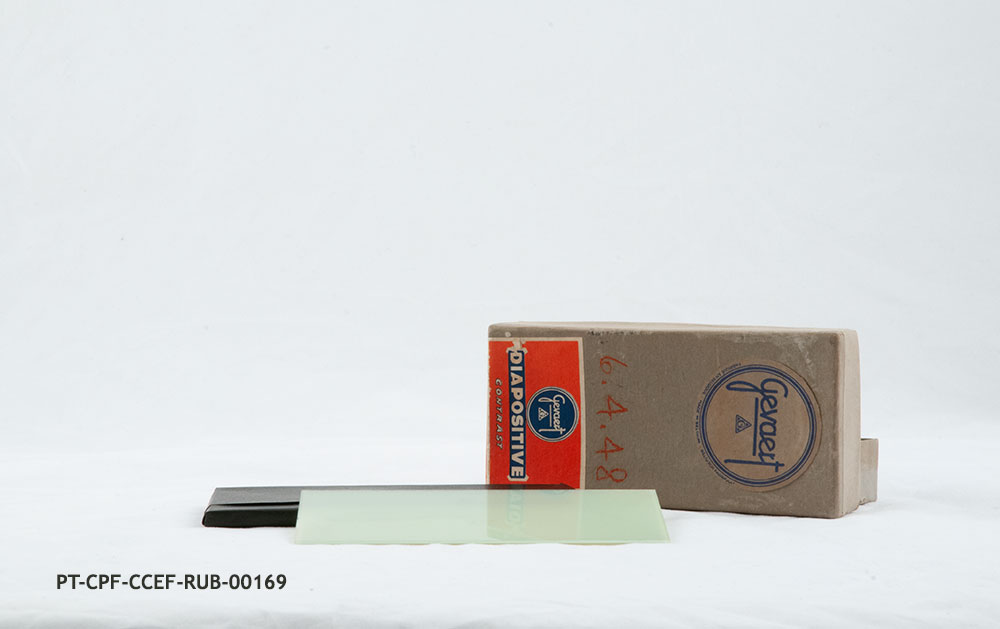Chapa de vidro, data não identificada

Construtor Gevaert, Bélgica
Coleção de Câmaras e Equipamento Fotográfico do CPF/ Fundo Ruben Garcia, PT/CPF/CCEF/RUB/00169
© Centro Português de Fotografia/DGLAB/MC
A utilização dos primeiros negativos de vidro data ainda da primeira metade do século XIX, quando se começou a usar a clara do ovo, que contém albumina, como meio ligante dos sais de prata ao próprio vidro. Surpreendentemente, estes negativos reproduziam os pormenores das cenas fotografadas com extraordinária qualidade, tornando-se de imediato um material de eleição para os fotógrafos.
No Ano Internacional da Tabela Periódica fazemos agora referência ao elemento químico Potássio (símbolo químico K), sétimo elemento mais abundante na crosta terrestre, e cujas substâncias são utilizadas no fabrico do vidro.
The first negatives were used in the first half of the 19th century, when egg whites, which contain albumen, started being used to bind silver salts to glass. Surprisingly, these negatives reproduced the details of the photographed scenes with an extraordinary quality, and immediately became the material of choice for photographers.
In the International Year of the Periodic Table, this month we highlight Potassium (chemical symbol K), the seventh most common element in the Earth’s crust, whose substances are used to manufacture glass.
Nowadays, most cameras have a built-in flash, but just over 150 years ago, taking pictures in locations with little or even no natural light was unthinkable.
Glass plate, unknown date
Manufactured by Gevaert, Belgium
Camera and Photographic Equipment Collection/ António Pedro Vicente Collection,, PT/CPF/CCEF/RUB/00169
© Centro Português de Fotografia/DGLAB/MC